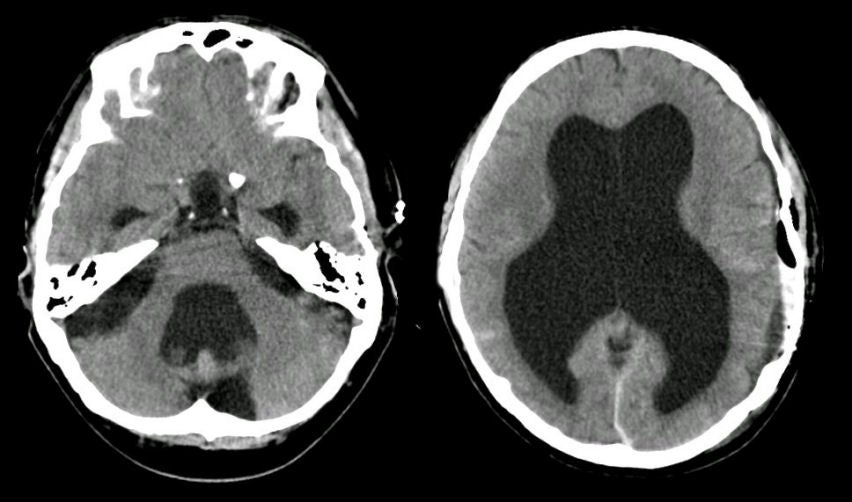
|
A 79 year-old woman presented with gait difficulty and falling. She was brought to the emergency room where she was noted to be confused. |

![]()
![]()
![]()
![]()
| Communicating Hydrocephalus:
Axial CT scans. Note that all the ventricles are markedly dilated, including the fourth
ventricle. There is very little cerebral atrophy. Also, note the dilated temporal horns,
a commonly seen early sign of hydrocephalus.
Also note the small subdural hematoma (red arrows)
accompanied by subdural air (yellow arrow) and an overlying
scalp contusion (purple arrow). All of these likely
resulted from her fall. Given the total picture, this patient likely had
hydrocephalus which resulted in her impaired gait which then
led to her fall (and subdural hematoma, subdural air, and scalp
contusion).
Hydrocephalus is recognized as enlarged ventricles out of proportion to the amount of cerebral atrophy. Communicating hydrocephalus occurs when the ventricular system is in continuity with the subarachnoid space and all the ventricles are enlarged, including the fourth ventricle. In nearly all cases, it results from impaired CSF absorption. Rarely, hydrocephalus occurs from excess CSF production. One presentation of communicating hydrocephalus is that of normal pressure hydrocephalus (NPH), wherein the opening pressure is within normal range, but too high for the size of the ventricles. Remember LaPlace's Law which states that wall tension (force) is proportional to both pressure and radius; thus, if the ventricles are enlarged (increased radius) even in the setting of normal pressure, then the wall tension is increased resulting in compression of adjacent brain structures. NPH presents with the classic triad of impaired gait, urinary incontinence, and mental status changes. It is an important disorder to recognize as it is potentially treatable by shunting. |
Revised
11/23/06
Copyrighted 2006. David C Preston